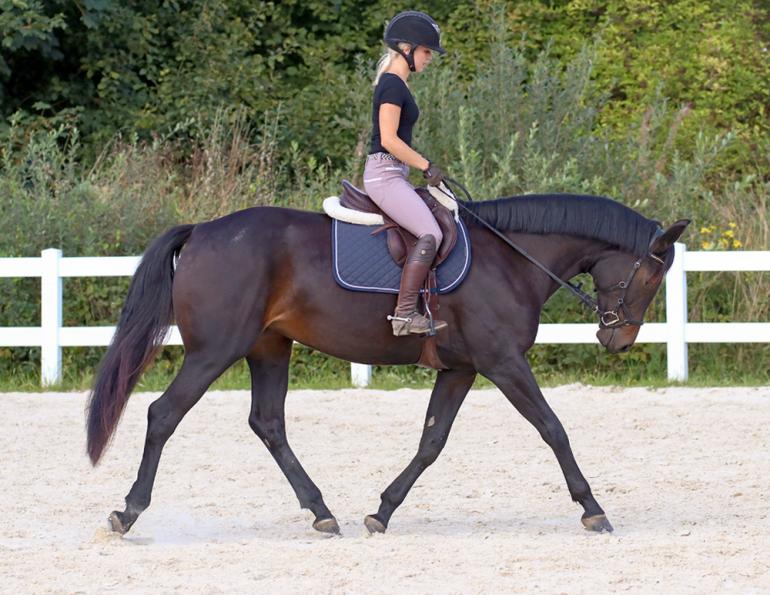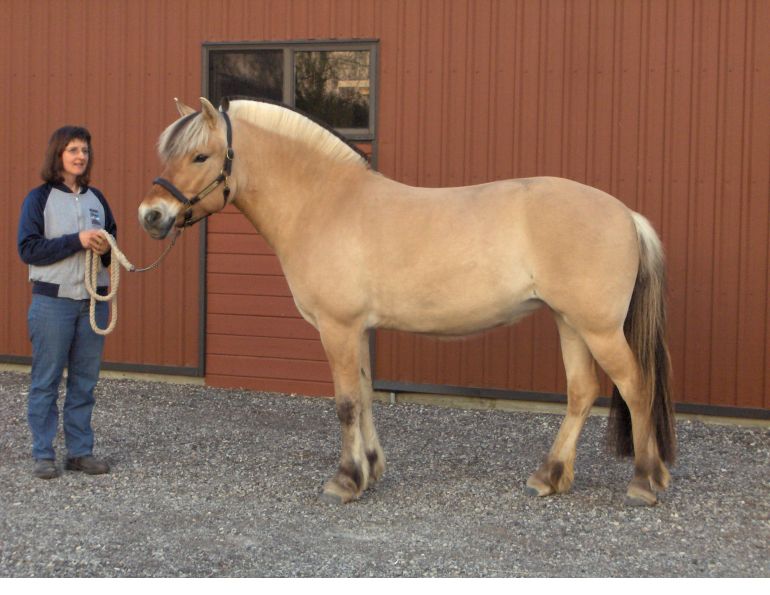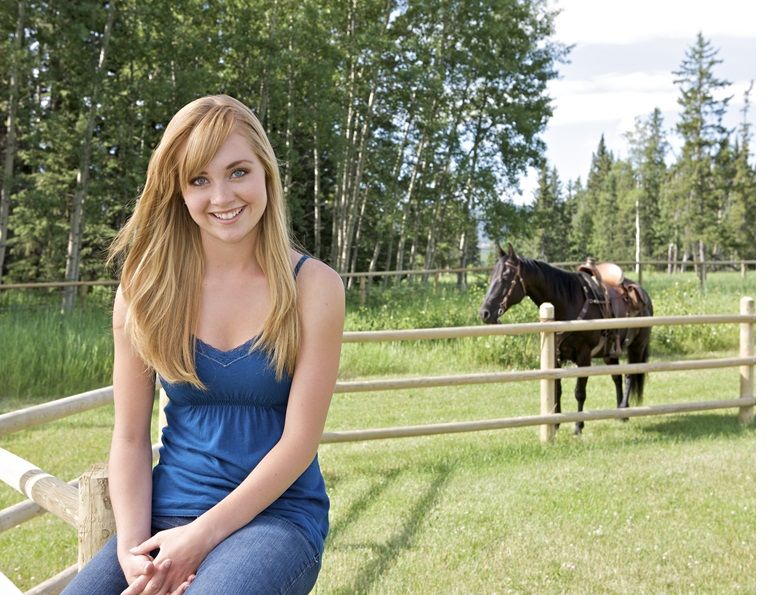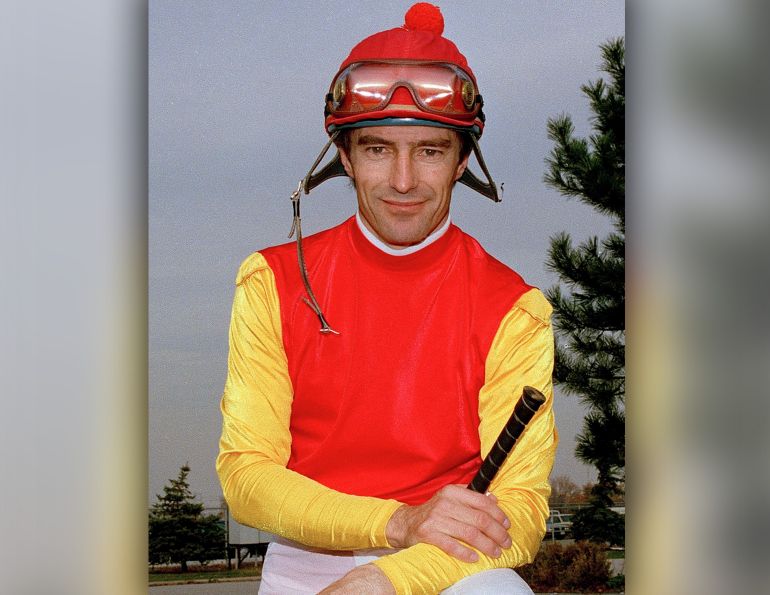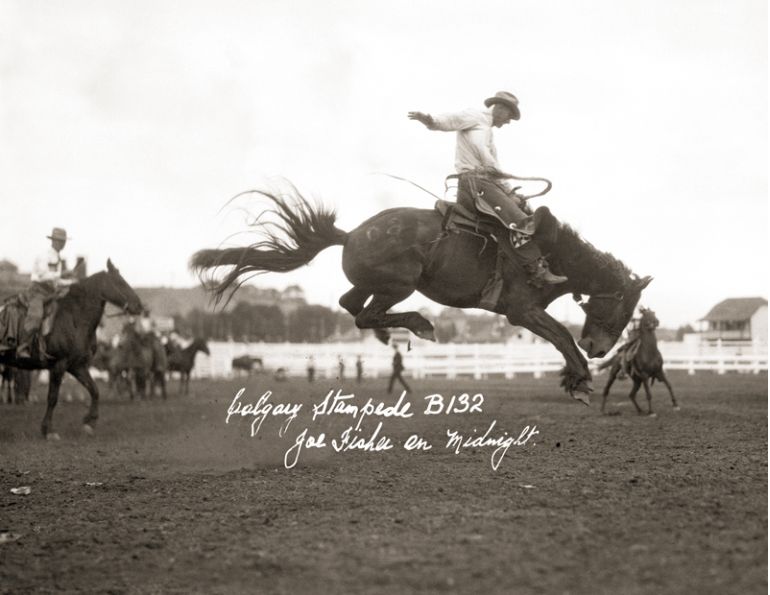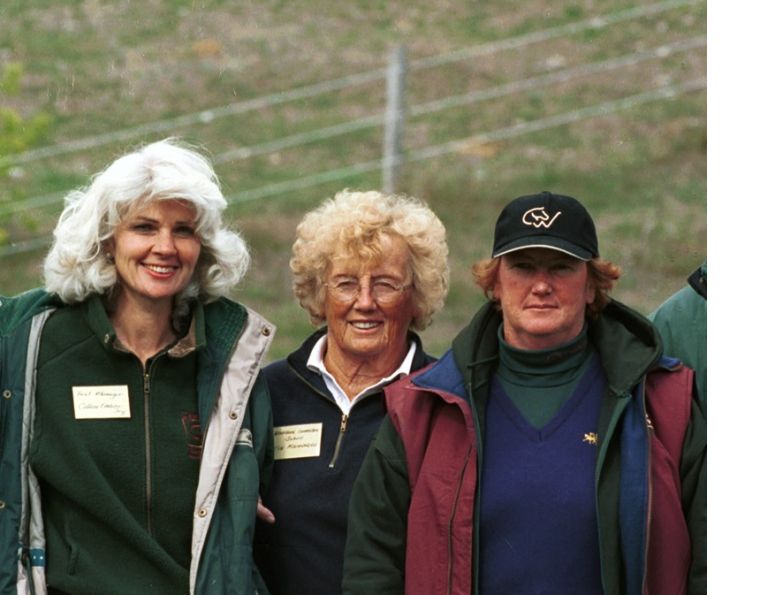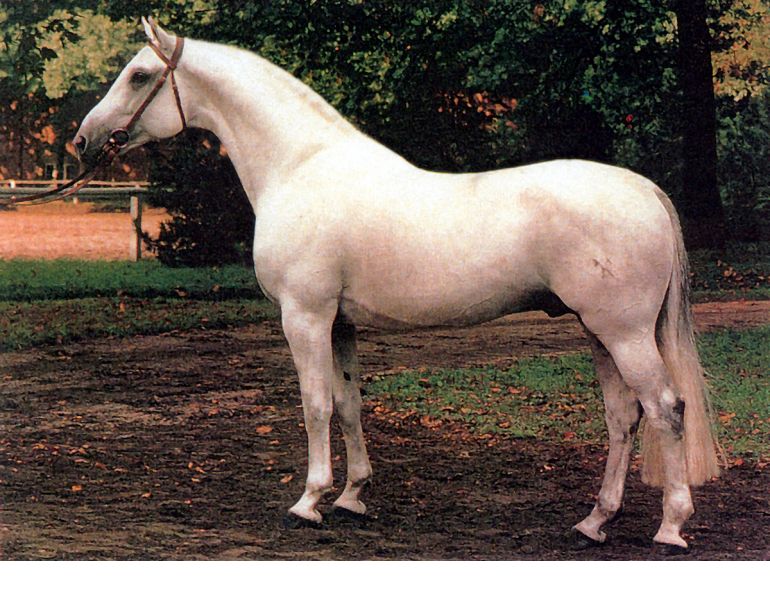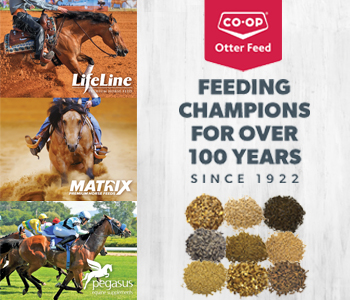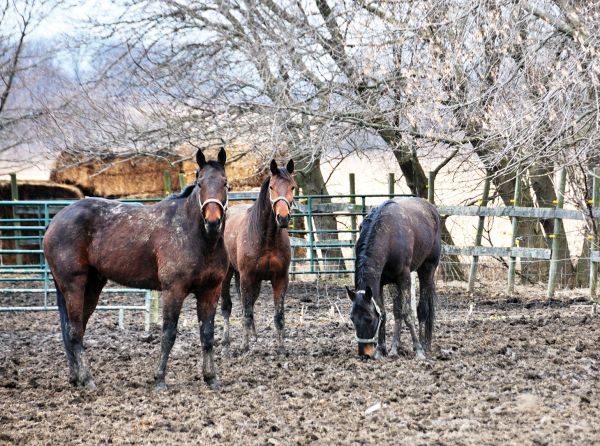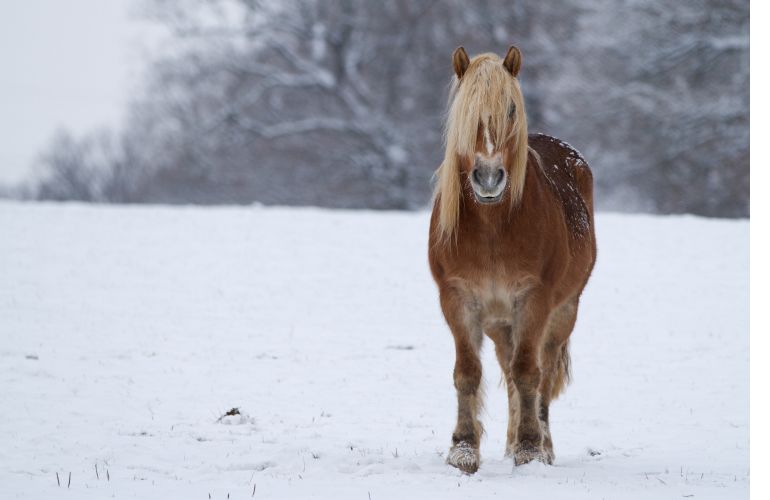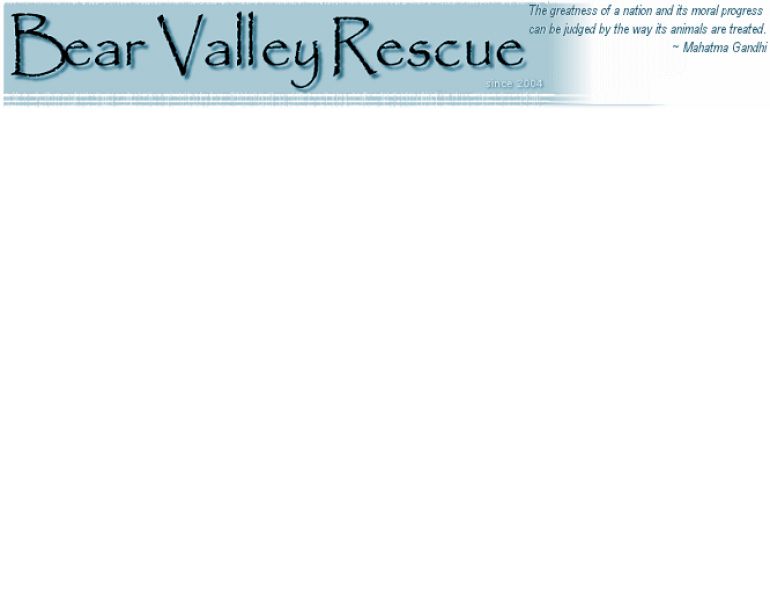By Ken Morris, Canadian Horse Heritage and Preservation Society
Roxanne Salinas of Bear Hollow Farm in Lone Butte, BC, has been a tireless advocate and historian of Canada’s National Horse for a quarter century. As we celebrate Canada Day 2025 and all things Canadian, Ms. Salinas gives us a sneak peek into her upcoming book, Canada’s National Horse: A History.
Why are you writing this book?
To give the Canadian Horse back its history. A lot of folks know the Canadian Horse is the National Horse of Canada, but they may not know why it deserves that recognition.

Canadian mare Jalna Luckybud Whisper owned by Barb Malcolm and ridden by Lizzie Dunlop. Photo: Richard Hope.
Why does the Canadian Horse deserve to be the Canada’s National Horse?
Because he is “all ours,” developed entirely within Canada by and for Canadians. Some might say the Canadian Horse is only a Quebec horse. Of course, Quebec is where the breed originated, and the people of Quebec are justifiably proud of their race patrimoniale (heritage breed). But the Canadian Horse played an important part in the exploration, settlement, and development of the rest of our country, too. In my book I tell the story not only of the Canadian Horse within Quebec and Ontario, but throughout the western provinces.

Canadian mare Briteaux Gryngoe Moka-Wonka owned by Mary-Lou Ashton. Photo: Karla Rosalin Photography
Tell us about your own history with the Canadian Horse. What inspired you to tell this story?
Around 1976, I saw a photo in a magazine of a Canadian Horse for sale. Something about that horse must have struck me because I always remembered it. Years later, I saw a black Canadian mare with a big wavy mane at a Morgan horse show. The Morgan folks said she looked “coarse,” but I rather liked her. When my Morgan got old, I tried to find another one like him, but couldn’t. When I saw an ad for Canadian Horses I thought: That’s what I’m looking for!

Purebred Canadian filly, Donalf Neirin Gala. Bred by Barb Malcolm, Donalf Farms. Photo taken in early winter 2019 at Churchill Chimes Equestrian Centre, Stouffville, ON. Photo: Madeley Photography
In the summer of 2000, I visited Swallowfield Farm in Ladysmith, BC, and went into their pasture to see their mares and foals. They were being pastured with their stallion, Eno, who by then was 25 years old. As I recalled years later, “Eno walked out from behind a grove of trees. He held himself so proudly, and he looked right at me with a look that was strong and confident… one of those moments that is forever embedded in memory.”
Related: Ojibwe Spirit Horses

The stallion Swallowfield Eno Kelbeck, formerly owned by Roxanne Salinas and Martin Godfrey of Lone Butte BC. Since moving to Canadream Farm in 2010, he has passed on his athleticism and dressage suitability to many purebred foals. Photo: Laurie Neron
That fall, I bought his weanling son, Swallowfield Eno Kelbeck and competed with “Kal” for ten years, mostly in dressage. We were showing Second Level and well on our way to Third Level when I sent him to Canadream Farm in Quebec. It almost broke my heart, but MJ Proulx gave Kelbeck the opportunity to become more widely known and promoted as a breeding stallion. His progeny have gone on to compete successfully in upper levels in dressage.

Kelback’s son Canadadream Kelbeck You-and-Me, owned and ridden by Eliza Puttkamer Banks, showing in Prix St. Georges at the prestigious Dressage at Devon in 2024. Photos: Stacy Lynne Equine Photography.
During my visit to Woodmont Farm in Ladysmith that summer, a yearling filly jumped a big ditch to greet us, and followed us all the way to the gate. That filly, Du Coteau Dynamo Julienne, came home with us, too. I found myself asking: Who are you? Where did you come from? I had to know more. I started the research for my book as soon as I brought Kelbeck and Julie home.
Related: Trekking Horses: What Breeds Do Outfitters Prefer?

Canadian mare Temis Uvani Heritage, 20 years old when this photo was taken, and her day-old foal Flamme-de-Nuit. Photo: Mary Stevens
The breed history I hear runs something like this: “King Louis XIV sent horses to New France. They were bred in isolation for 100 years. Fast forward to 1913 when Albert de Cap Rouge was foaled.” I’m oversimplifying, but it sounds like there’s a lot missing.
When I was trying to find out more about the breed, I heard that same story repeated over and over. I wondered: Where’s the rest? There’s lots of information available from 1900 onwards, but that leaves 250 years of history that isn’t well known.

Guillaume Perrealt training his colt First Wakiza Kraken in harness. Photo: FirstFarmsCanadianHorses
During your research, did you come across anything that surprised you or made you question what you’d always been told?
The history of the breed is much more interesting than many folks appreciate. For example, the Canadian Horse is not just “a horse from France.” The breed started with those imported from France, and my book discusses old French breeds in depth, but the Canadian Horse did not “develop in isolation” after those first imports. I found evidence of what those other influences might have been in the British archives and in the New York State archives. You’ll need to read the book to find out more.
What’s the most common misconception folks have about the Canadian Horse?
That it’s “Canada’s best kept secret.” The Canadian Horse was once well known and much respected throughout Canada and the US. The breed was never a “secret” per se — rather, it was forgotten.
Related: The Rich History of the Clydesdale Horse
There are valid reasons why this happened. In 1890, US President William McKinley imposed steep tariffs on horses imported from Canada. Canadians started smuggling them across the border, but as soon as the horses stepped onto US soil, they weren’t Canadian Horses anymore. During World War I, all cross-border traffic of horses except racehorses was prohibited by law. After the war ended, the common practice of Canadians going to the United States to show their horses never really resumed. This, more than anything, led to Americans forgetting about the Canadian Horse and its many contributions to “American” breeds. The reasons Canadians forgot are different — mechanization led to decreasing demand for work horses, and ultimately the disbanding of government farms. As their numbers declined, fewer people had the opportunity to see Canadian horses, and outside of Quebec, the breed faded from memory.
If anyone knows the name of one Canadian Horse, it’s Albert de Cap Rouge. Is there any other horse represented in today’s bloodlines that you think deserves equal recognition today?
There is probably no more important stallion in the history of the Canadian breed than Brillant, foaled in 1890. He was a handsome black 15-hand horse with beautiful action, substance, and presence. And he was fast. He trotted the mile in 2:20; some said faster than that.

1850 Currier and Ives print of Canadian trotting stallion St. Lawrence, racing at Rochester, New York. Photo: Courtesy A Gallery of Currier & Ives Lithographs, © 2023 Vanessa R. Stern.
Brillant was entered as #23 in the “old books” — the handwritten ledgers of the Livre de Généalogie de la Race Chevaline Canadienne (Canadian Horse Breed Pedigree Book) — and as #935 in the new. If one were to look online at the Canadian Livestock Records Corporation (CLRC) pedigree site, or in the early volumes of the new herd books, it would seem that Brillant was of unknown parentage and left only a few progeny whose lines died out, making him inconsequential to the Canadian breed. In actuality, he sired 90 offspring registered in the old books, and no less than 16 of his known get and 15 of his grand-get were inspected and registered in the new books. In fact, almost every living Canadian Horse descends in some way from Brillant. Because he is so important to the breed, I devote an entire chapter to Brillant and his sons, one of whom was one of the most famous show horses in North America.
Your book details the many challenges the Canadian Horse has overcome. What do you think are the biggest threats to the breed today?
Some threats are economic and societal, but I’d say loss of knowledge is the other biggest threat to the breed.
Horse ownership has become increasingly expensive. It’s harder and harder for breeders to break even. Older, knowledgeable breeders retire and are not being replaced. This is an issue across the board in the horse industry, but it’s especially disastrous for small breeds like the Canadian. It is reflected not only in declining demand and consequently low birth rates, but in loss of knowledge that used to be passed down from one generation to the next.
Related: Iceland's Unique Breed: The Icelandic Horse

Guillaume Perrault, co-owner of First Farms Canadian Horses in Quebec, drives stallion Berthiaume Victor Wakiza. Photo: FirstFarmsCanadianHorses
New breeders may have no one to mentor them or are working with limited information. It’s not that their information is incorrect; it’s that it is incomplete. And that can have major consequences.
For example, if you mainly know about the government breeding programs, which focused on producing a heavier general utility horse, you might say that a lighter-built stallion is “off-type” and not use him. But if you also know that the breed has a long history of trotters and fine harness horses, you might think about how he’d complement your mare.
The bottom line is that the genetics for both heavier and lighter horses exist in the breed and are still available for us. You need to know the whole history to understand what you’re looking at and where it came from, and use that knowledge to make informed breeding decisions. I hope my book helps fill in this information gap.
What characteristics do you think are the most important to preserve in the breed? In other words, if you lost one or more of those traits, would you lose the breed?
Canadian horses are known for things like great feet and abundant manes and tails; but I think if we lose the temperament, we lose the breed. During my research, I was struck by descriptions of famous Canadian harness racers and show horses from the 1800s and early 1900s — horses you would expect to be “hot” and difficult to manage. Instead, these horses were described as having “perfect manners” or being “wonderfully gentle.” You’d expect that in a draft horse, but not in horses bred for trotting speed or animated action. Canadians have wonderful minds. That’s what makes them accessible for amateur riders and drivers today, and that’s what we need to preserve.
Related: Horse Community Heroes: Dan Wilson
If there is one thing you want Canadians to know about their National Horse, what would that be?
That they are capable. Given the opportunity, they can do anything any other breed can do. You can find a horse within the breed that can do any discipline and do it really well. For example, Kelbeck’s son, You-and-Me (“Toque”) won the dressage suitability competition at the prestigious Dressage at Devon in 2015. Last year he showed in Prix St. Georges at Devon, and he’s not the only Canadian to make it to PSG. Given the small numbers of Canadian Horses out there competing, they have done remarkably well.

Canadian gelding El Passo Nobell Texel, owned by Mike and Patty Carley of Red Deer, Alberta. Patty (driver) and Mike (navigator) compete in Combined Driving at the Intermediate level. Patty also shows Texel in Working Equitation and rides him on mountain trails, a great example of the breed’s versatility. Photo: Mark Muilwijk
It’s been a long road to completing your book, and I’m thrilled you are nearing the finish line. Is there anyone you’d like to thank?
First and foremost, the late Élène Sergerie of Joliette, QC. She had a real passion for the breed and its history. We spent countless hours on the phone together, talking in Franglish ‘til one in the morning (4am for her!) poring through old newspapers in the Bibliothèque et Archives Nationales du Québec (Library and Archives Canada), years before the text was searchable. She became like a sister to me, and this book in many ways is for her. Laura Lee Mills, registrar at the CLRC, copied the first herd books for me. Without the CLRC, I never would have uncovered the story of Brillant. Laura sent me a list of all the early Canadians that went west, and all the Annual General Meeting minutes from 1918 onwards. Sandra Rowe was very encouraging, knowledgeable, and influential to my work. Marie-Lynn Hammond, the singer/songwriter who wrote about the Canadian Horse in her album Pegasus, published some of my research on her website and for years encouraged me to continue the project. And you, Ken, have always been very supportive. Thanks to the Canadian Horse Heritage and Preservation Society (CHHAPS), which stepped in to assist me in preparing my book for publication.

Canadian mare Temis Uvani Heritage. Photo: Ken Morris
From the lessons of the past, what do you think the future — or futures — of the Canadian Horse could be?
Frankly, I’m worried about our National Horse. During the 2000s birth rates were high and lots of people were out there showing and promoting their horses. I felt like the breed was really going somewhere. Then came the recession of 2008, and pfft! The number of foals born each year plummeted, and we still haven’t recovered from that. It’s hard to feel optimistic, but there is reason for hope.
Related: How Horses Shaped Canada

At First Farms in Quebec, traditions are being passed on — and shared with the world in the digital age. Here the children help train their little mare, Halice. Photo: FirstFarmsCanadianHorses
Breeders like Vanessa Turcotte and her husband Guillaume Perreault at First Farms Canadians in Quebec are breeding and using Canadians as traditional work and family horses, while sharing their stories with the world through social media. Next-generation breeders like Mira Warrington in BC, who bred Soul Ridge Lamont Flame (Ben), recently sold for $200,000 US at a prestigious ranch horse sale, are helping to elevate the profile of the Canadian Horse breed. Foaled in BC, trained in Alberta, and like Brillant so long ago, purchased by a rancher in Manitoba — Ben is truly an “all Canadian” horse.

All aboard for a winter drive at First Farms with stallion Berthiaume Victor Wakiza. Photo: FirstFarmsCanadianHorses
It goes to show there are some really good Canadian horses out there. If we can get them seen by people who recognize their qualities and aptitudes, who can develop and market them, the Canadian Horse may yet again come back from the brink of extinction. It won’t be easy, but we Canadians are known for our grit and determination. Elbows up!
To receive book updates on Canada’s National Horse: A History by Roxanne Salinas, visit Canadian Horse Heritage and Preservation Society on Facebook.
Canadian Horse Heritage and Preservation Society website
Related: Canada’s Wild Horses - An Uncertain Future
Related: The Canadian Horse
About the Author: Ken Morris is Chairperson and a valuable member of CHHAPS and the Canadian Horse community, and has done a great deal to promote the Canadian in the Pacific Northwest of the United States.
Main Photo: The stallion, Swallowfield Eno Kelbeck. Credit: Laurie Neron




